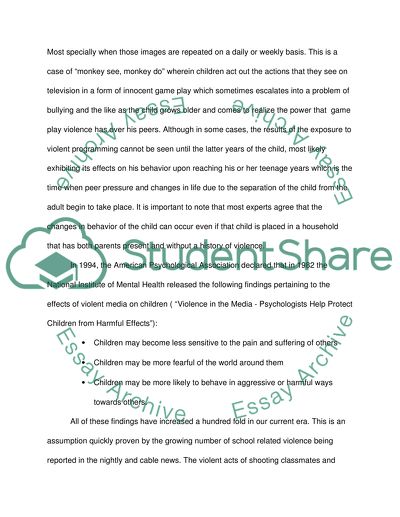Cite this document
(“The Effect of TV Violence on Children Term Paper”, n.d.)
Retrieved from https://studentshare.org/psychology/1397460-the-effect-of-tv-violence-on-children
Retrieved from https://studentshare.org/psychology/1397460-the-effect-of-tv-violence-on-children
(The Effect of TV Violence on Children Term Paper)
https://studentshare.org/psychology/1397460-the-effect-of-tv-violence-on-children.
https://studentshare.org/psychology/1397460-the-effect-of-tv-violence-on-children.
“The Effect of TV Violence on Children Term Paper”, n.d. https://studentshare.org/psychology/1397460-the-effect-of-tv-violence-on-children.


